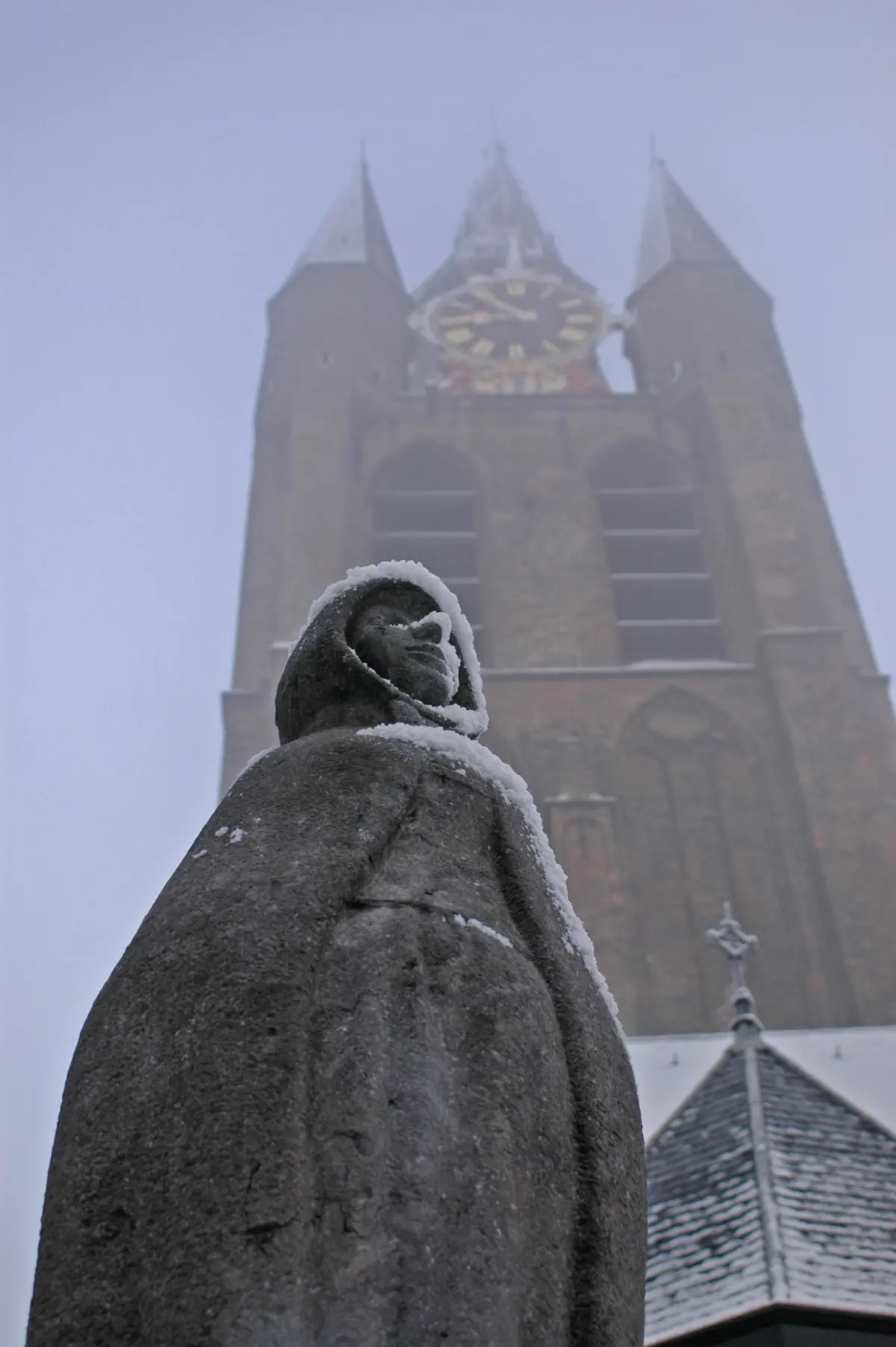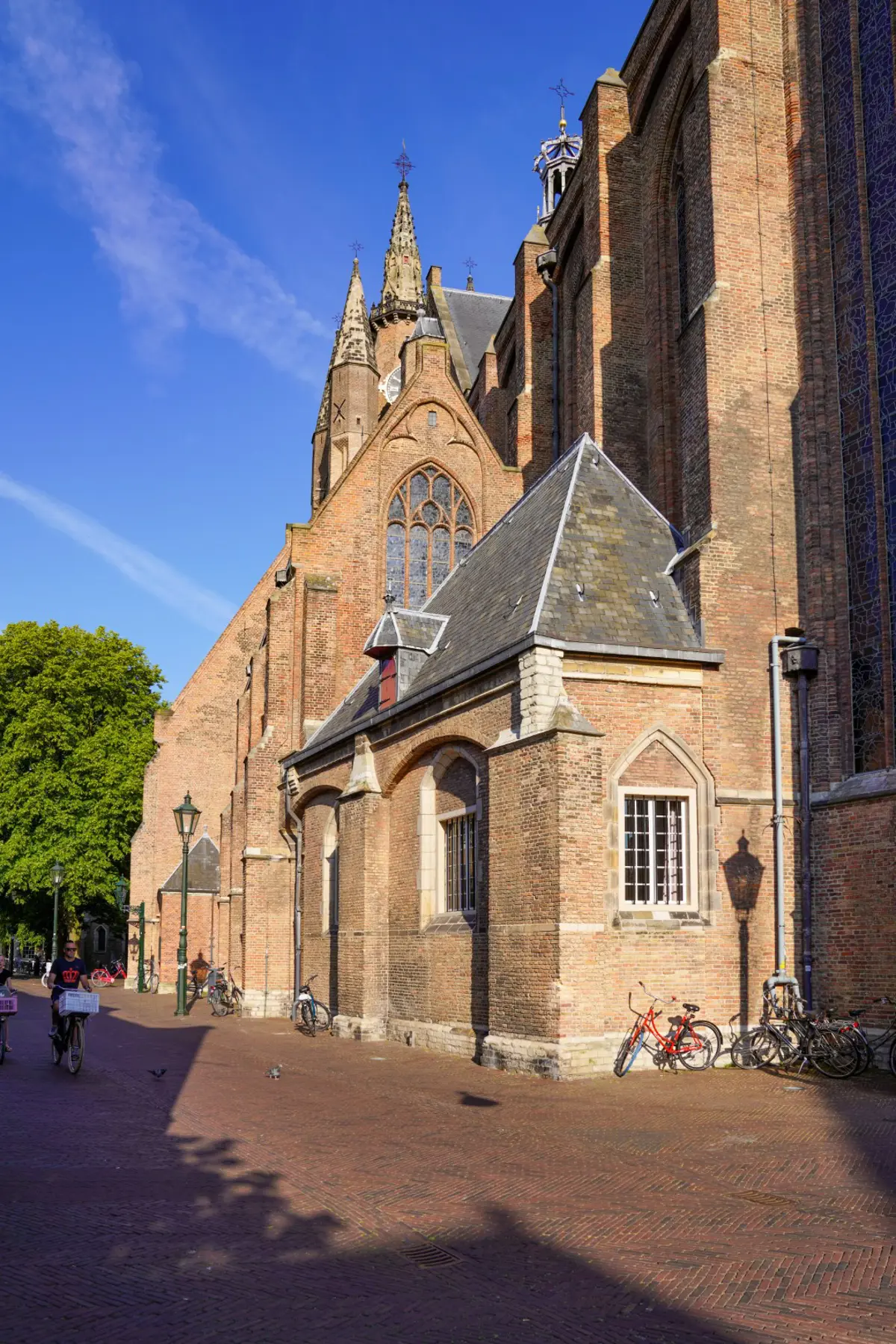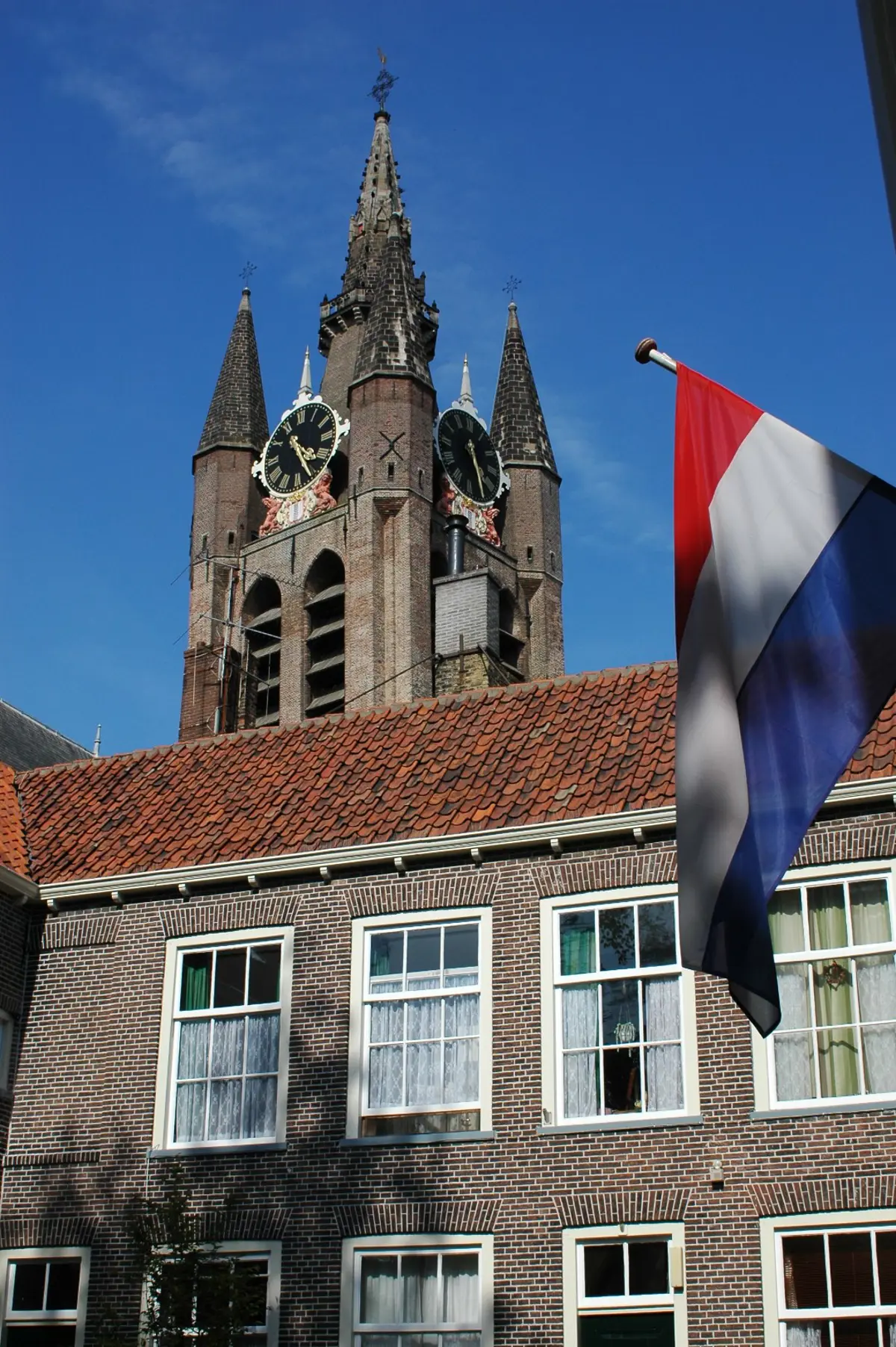Extensions Old Church
Over time, the Old Church grew with Delft. Around 1240, civil servant Bartholomeus van der Made had two aisles and a choir built: the first expansion.

Competition
In 1350, the now-leaning tower was completed. Later, they made the side aisles wider and as high as the nave. Perhaps to compete with the New Church, however, new extensions followed in the early fifteenth century. The nave was now again higher than the side aisles.
Natural stone
In the early sixteenth century, they wanted to make the church entirely of natural stone, instead of brick. A north transept was created, which still stands out from the rest. However, due to the city fire of 1536 - and mainly due to the Reformation - it stopped there.
Skyline
This gave the Old Church the contours with which it has defined the image of the city for centuries. Incidentally, several major renovations were needed over the centuries.
Discover more about the history of the Old Church
Click below for more information.

The genesis
The origins of Delft's oldest church go back to the dark beginning of the Middle Ages. Around 1050, the settlement along the 'Delf' probably already had a small tufa church measuring about twelve by thirty metres.

Extensions Old Church
Over time, the Old Church grew with Delft. Around 1240, civil servant Bartholomeus van der Made had two aisles and a choir built: the first expansion.

Restorations Old Church Delft
Over the centuries, the Old Church has undergone several restorations to withstand the effects of fires, a massive explosion and the ravages of time.
